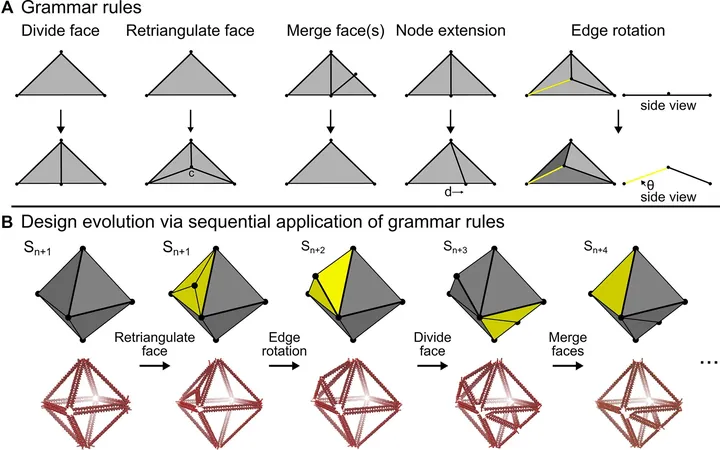
Unlocking the Future: New Generative Design Tool Revolutionizes DNA Origami Creation!
2025-01-02
Author: Nur
In a groundbreaking development, researchers at Carnegie Mellon University have made significant strides in the field of DNA origami—a revolutionary fabrication technique that involves folding DNA strands into intricate 2D and 3D nanostructures. These programmable structures have immense applications in areas such as drug delivery, diagnostic medicine, nanomaterials development, and molecular computing. However, much like traditional paper origami, previous designs were limited by the researchers' imagination and creativity.
To tackle these limitations, the Department of Mechanical Engineering has introduced a state-of-the-art generative design tool that utilizes grammar rules to produce optimized wireframe DNA origami nanostructures tailored to specific requirements. This innovation allows scientists to generate hundreds of design options in mere minutes, drastically speeding up the process of creating complex nanostructures.
"With this tool, we're breaking down barriers. Scientists can now visualize and produce designs they may not have considered before," stated A.J. Vetturini, a Ph.D. candidate in mechanical engineering.
The tool is built upon shape grammar rules, initially utilized in product and architectural design, which help manipulate shapes within defined parameters. Given that DNA operates under a straightforward pairing system (A with T, C with G), it was a natural progression for researchers to adopt these shape grammars in developing DNA structures. The new computer-aided design tool featured in the journal Nucleic Acids Research capitalizes on these rules to swiftly iterate through designs and identify optimal outcomes.
Professor Jon Cagan, a key contributor to this generative design process known as shape annealing, commented, "This technology allows for the manufacturing of structures that might not spontaneously emerge through traditional design thinking, infusing them with purpose and functionality."
The research team, leveraging their profound understanding of DNA nanotechnology, recognized that existing designs often only scratch the surface of potential innovations. One of the primary hurdles has been the challenging nature of creating highly anisotropic DNA origami, which can stifle exploration of groundbreaking concepts. Additionally, the constraints of using standardized, commercially available single-stranded DNA scaffolds limit designers to fixed-size structures.
Rebecca Taylor, an associate professor of mechanical engineering, emphasized the challenges involved in designing these nanostructures. "Navigating the complexities of arranging thousands of nucleobases in precise sequences is incredibly intricate. Integrating multi-objective optimization into the design process is crucial to achieving desired mechanics, shape, and material efficiency."
The research team doesn't just stop at design; they have also successfully manufactured and characterized several designs produced by this innovative tool. Their findings demonstrate that the new generative design pipeline integrates seamlessly with existing methodologies for converting 3D meshes into base DNA origami representations.
This advancement is more than just a technological leap—it represents a crucial step towards accelerating research in biomedical applications and nanotechnology, unlocking endless possibilities for the future of medicine and materials science. Get ready to witness a new era of DNA origami!
 Brasil (PT)
Brasil (PT)
 Canada (EN)
Canada (EN)
 Chile (ES)
Chile (ES)
 Česko (CS)
Česko (CS)
 대한민국 (KO)
대한민국 (KO)
 España (ES)
España (ES)
 France (FR)
France (FR)
 Hong Kong (EN)
Hong Kong (EN)
 Italia (IT)
Italia (IT)
 日本 (JA)
日本 (JA)
 Magyarország (HU)
Magyarország (HU)
 Norge (NO)
Norge (NO)
 Polska (PL)
Polska (PL)
 Schweiz (DE)
Schweiz (DE)
 Singapore (EN)
Singapore (EN)
 Sverige (SV)
Sverige (SV)
 Suomi (FI)
Suomi (FI)
 Türkiye (TR)
Türkiye (TR)
 الإمارات العربية المتحدة (AR)
الإمارات العربية المتحدة (AR)